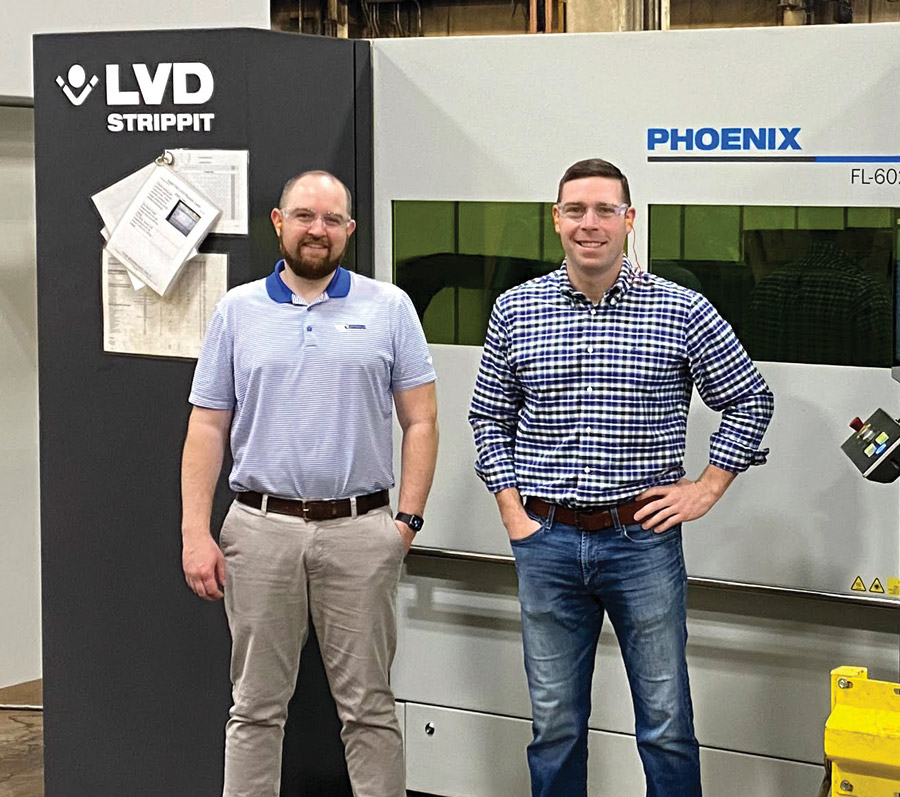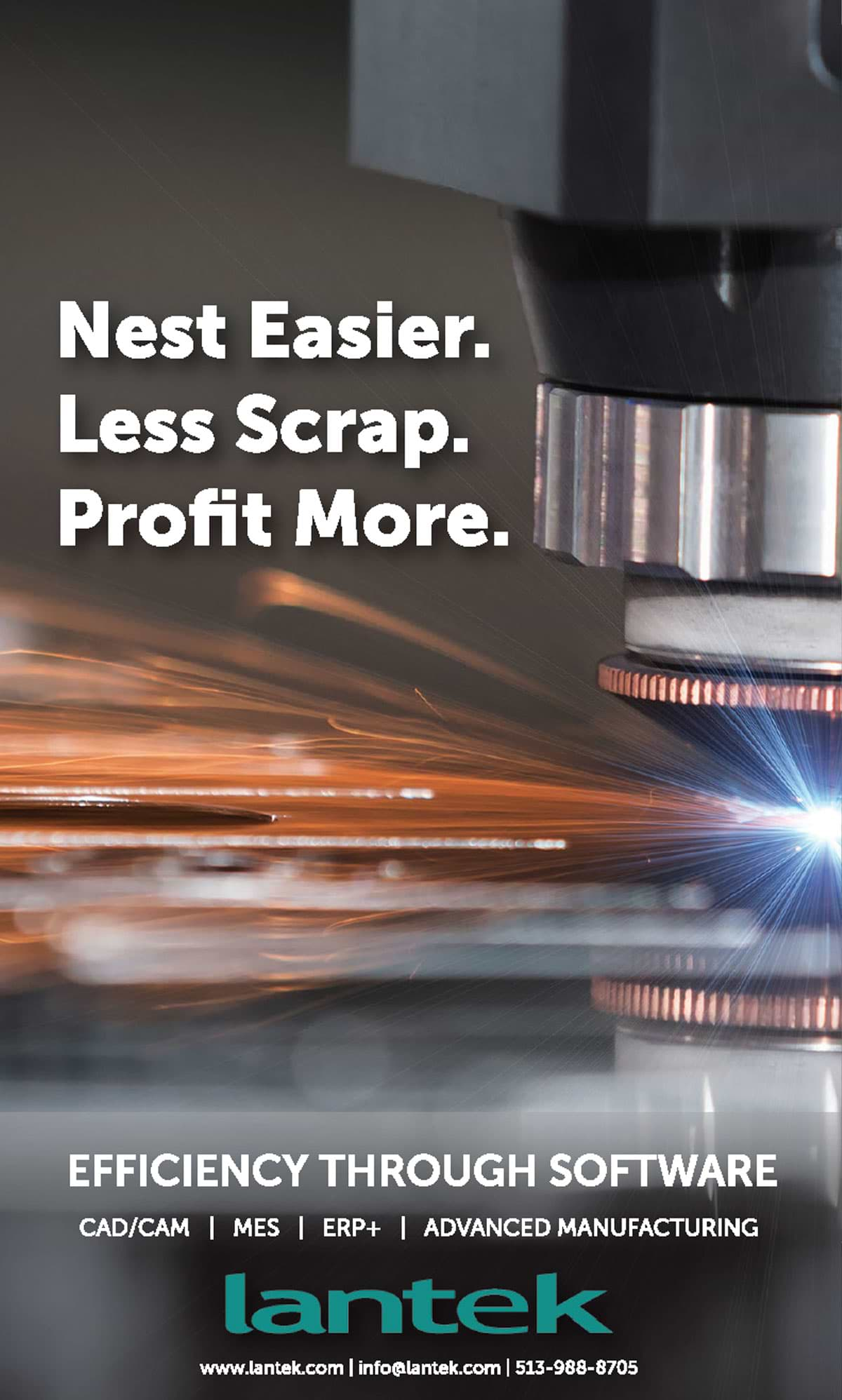lasertechnology
n November 1789, Benjamin Franklin wrote a letter to French physicist Jean-Baptiste Le Roy in which he penned the now familiar words, “…nothing is certain, except death and taxes.” More than two centuries later, change remains a constant, but it can also signal growth for companies able to adapt. Fort Wayne, Indiana-based Ottenweller Co. Inc. has parlayed flexibility and the capacity to adjust to different conditions into a business that has thrived for more than 100 years.
Ed Ottenweller established the company as a blacksmith shop in 1916 with just six employees. By the 1980s, it had evolved into a metal fabricator with 75 employees and a customer base that covered two-thirds of the United States.
A decade later, Ottenweller Co. took on large, heavy fabrication projects for Fortune 500 companies like John Deere and Caterpillar. In 2007, the company opened a second location in Mount Airy, North Carolina. Today, Ottenweller encompasses 250,000 square feet of manufacturing space and has more than 150 employees. Staffed with Six Sigma Black Belt practitioners, it has earned certifications that allow it to manufacture products for the military and defense contractors.
The metalworking equipment supplier’s large-format laser cutting machines anchor Ottenweller operations, which include engineering, machining, forming, robotic welding, module assembly and paint. The need to add capacity and expand cutting capabilities prompted Ottenweller to install an LVD Strippit Phoenix 6020 6kW fiber laser in 2017 and a Phoenix 6020 10kW fiber laser in 2019.
“We were running an LVD large-format CO2 laser cutter with a 5-foot by 10-foot table to process thicker plate,” says Ottenweller. “We wanted to retain that large format with the fiber lasers.”
With the latest equipment purchases, the company did consider other fiber laser manufacturers to see “who was ahead in terms of technology,” Ottenweller says. The Phoenix fiber lasers stood up to scrutiny and reminded Ottenweller of the company’s first purchase.
“At the end of my freshman year at Indiana University, I took a trip with my grandfather, father and brother to visit LVD’s headquarters facility in Belgium to look at a CO2 fiber laser,” he says. “I knew then I wanted to come back into the business and preserve our lineage. When I saw the technology being demonstrated at LVD, I saw the future.”
 With the 10kW, we’re cutting eight times faster on certain material thicknesses.
With the 10kW, we’re cutting eight times faster on certain material thicknesses. 
Two decades later, LVD Strippit continues to support Ottenweller Co. with advances like its chamber nozzle technology, which improves consumption of assist gas. “Most fiber lasers cut at a pressure of 200 psi to 300 psi,” Colle says. “Our chamber nozzle design allows Ottenweller to cut at 75 psi to 100 psi. We’re able to cut nitrogen consumption in half. In many cases, cutting speeds increase by 30 to 50 percent. Ottenweller can cut ½-inch plate faster but with lower nitrogen consumption.”
At Ottenweller’s Fort Wayne factory, the Phoenix 6020 6kW is doing the work of three or four CO2 cutting machines. “The 10kW fiber laser saves them another 1,200 hours annually,” notes Colle. “Ottenweller used to have five CO2s. Now they have just two fiber lasers and they are cutting more than ever.”

“A fiber laser beam is half the size of a CO2 beam, which allows the operator to perform precision work,” says Colle. “But we can also dynamically change the beam to enlarge kerf. To remove that much material on thick plate and achieve a quality edge cut, you have to evacuate molten metal at a good rate. You want the parts to drop out of the skeleton once they are cut.”
The fabricator is also cutting faster. “With the 10kW, we’re cutting eight times faster on certain material thicknesses,” Ottenweller says.
With a second Phoenix 10kW fiber laser scheduled for installation this month, company leaders took the opportunity to reorganize work flow.
“We have three buildings in Fort Wayne, and our work flow just wasn’t efficient,” says Ottenweller. “We positioned the Phoenix 6 kW and the Phoenix 10 kW next to each other. We stagger demand between the two machines but dedicate short runs on one fiber laser and long runs on the other machine.
“The speed and accuracy of the fiber lasers has completely changed our thought processes on how we run our operations,” he says. “We’re leaner and we have increased capacity at least 2.5 times. We’ve reduced the need for secondary processing downstream and reduced costs on some of our products.”
Ottenweller wants to delve into cutting materials like aluminum and copper to capture new business. While expecting dividends from its investments over time, Ottenweller is also focused on diversification, maintaining the company’s strength and ushering in the fifth generation.
Ottenweller Co. Inc., Fort Wayne, Indiana, 260/484-3166, ottenweller.com.
